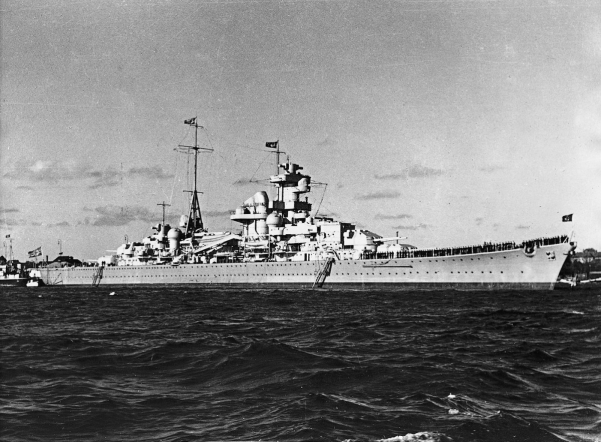
Launched in June 1937, the heavy cruiser Blücher was one of five vessels in her class, the others being the Lützow, Seydlitz, Prinz Eugen and Admiral Hipper. On 9 April 1940, flying the flag of Admiral Oskar Kummetz, she took part in the German invasion of Norway, leading a group of warships carrying 2000 troops and bound for the Norwegian capital, Oslo.
This spearhead force was to be followed by 15 transport vessels, carrying a further 3761 troops. Although the invasion – the first major amphibious operation of World War II –- was meticulously well planned, Admiral Kummetz ordered his force to proceed through the Drobak Narrows, leading to Oslofjord, at only 12 knots. This would prove a costly decision for the German Navy. The waterway was only 457m (500yd) wide and was heavily defended by forts. Holding their fire until the Blücher was at point-blank range, the Norwegian gunners opened fire and quickly set her ablaze. Their torpedoes then reduced her to a helpless hulk, and at 06:30 hours she capsized and sank with the loss of over 1000 officers and men. In the 1990s, fuel oil leaking from her corroded tanks began to pose a serious pollution threat, requiring a major underwater engineering effort in order to avert a large-scale environmental disaster.
Specifications
- Type
- Heavy Cruiser
- Length
- 205.83m (675.3ft)
- Beam
- 21.25m (69.75ft)
- Draught
- 5.79m (19ft)
- Displacement (normal)
- 14,474tnes (14,247t)
- Displacement (full load)
- 18,499tnes (18,208t)
- Machinery
- Boilers & Steam Turbines
- Armour (belt)
- 76.2mm (3in)
- Armour (deck)
- 50.8mm (2in)
- Armour (turrets)
- 101.6mm (4in)
- Guns
- 8x8in; 12x4.1in
- AA guns
- 12x40mm; 8x37mm
- Aircraft
- Three
- Crew
- 1600
- Launched
- June 1937
- Speed
- 32.5 knots
